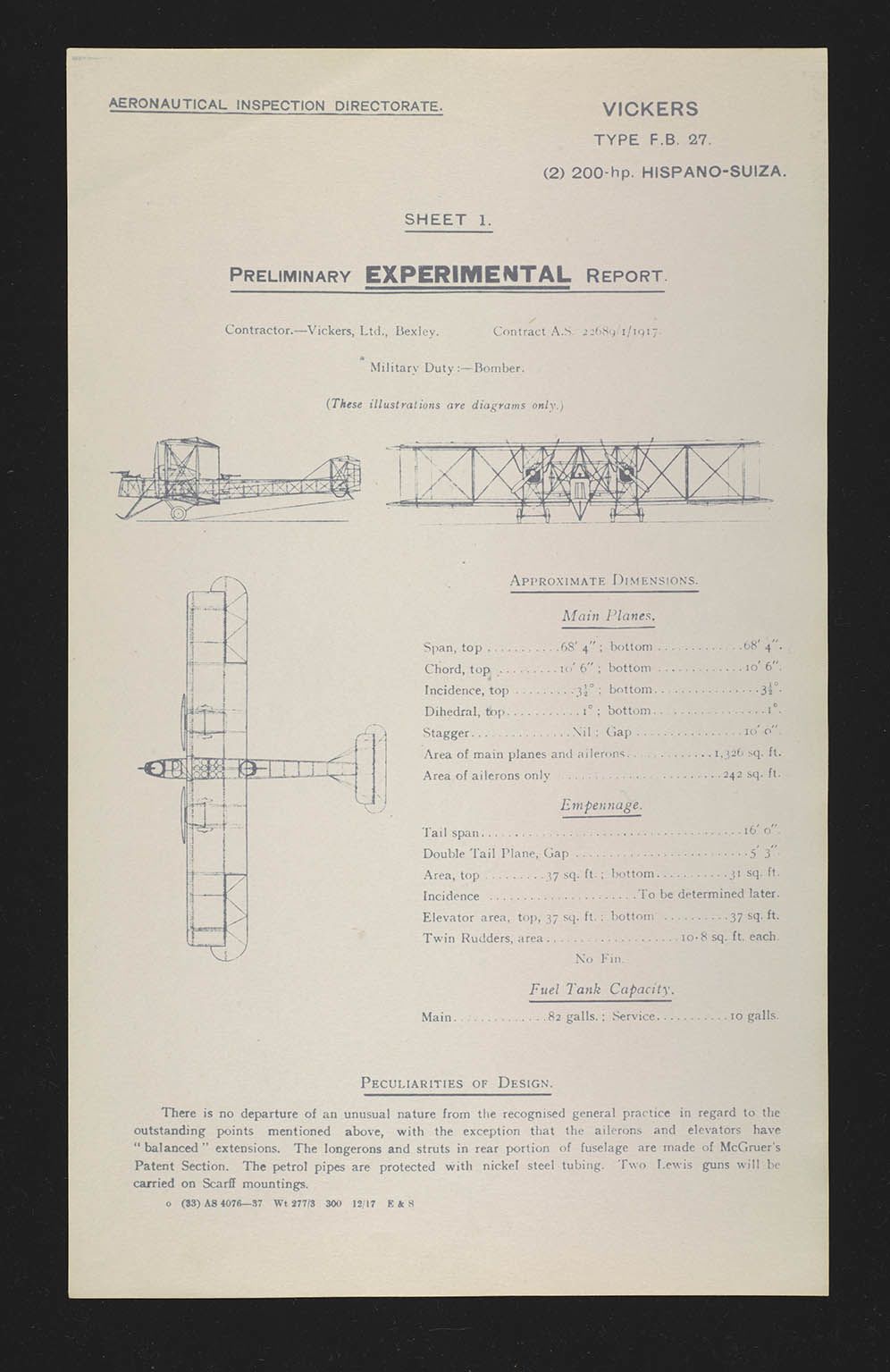The first non-stop transatlantic air crossing -
100 years on
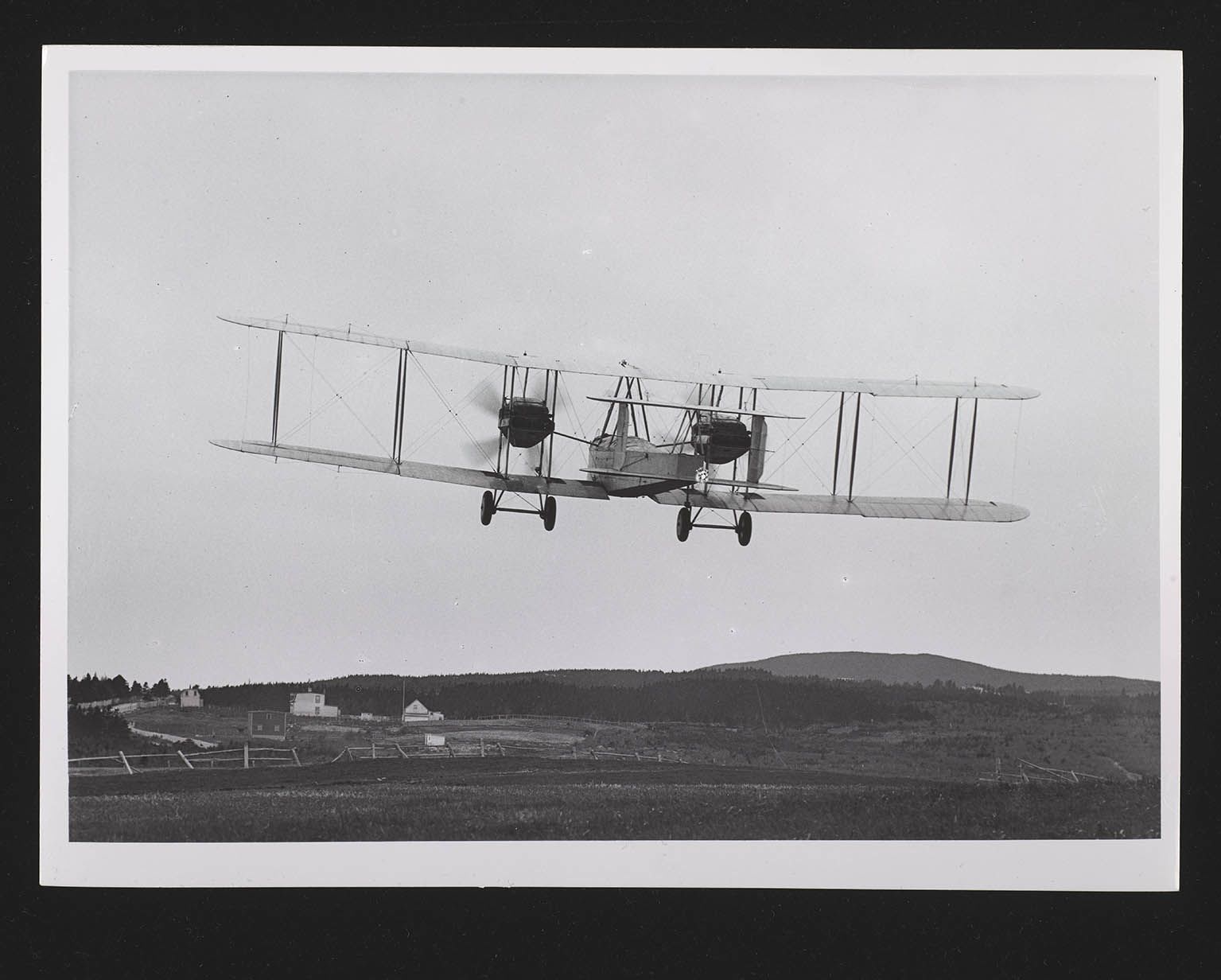
A century ago, over the night of 14–15 June 1919, Captain John Alcock and Lieutenant Arthur Whitten Brown became the first people to fly non-stop across the Atlantic Ocean.
Competing for a prize of £10,000 offered by the Daily Mail, they flew from St John’s, Newfoundland, to Clifden in Ireland, a distance of 1,890 miles, in their twin-engined Vickers Vimy biplane.
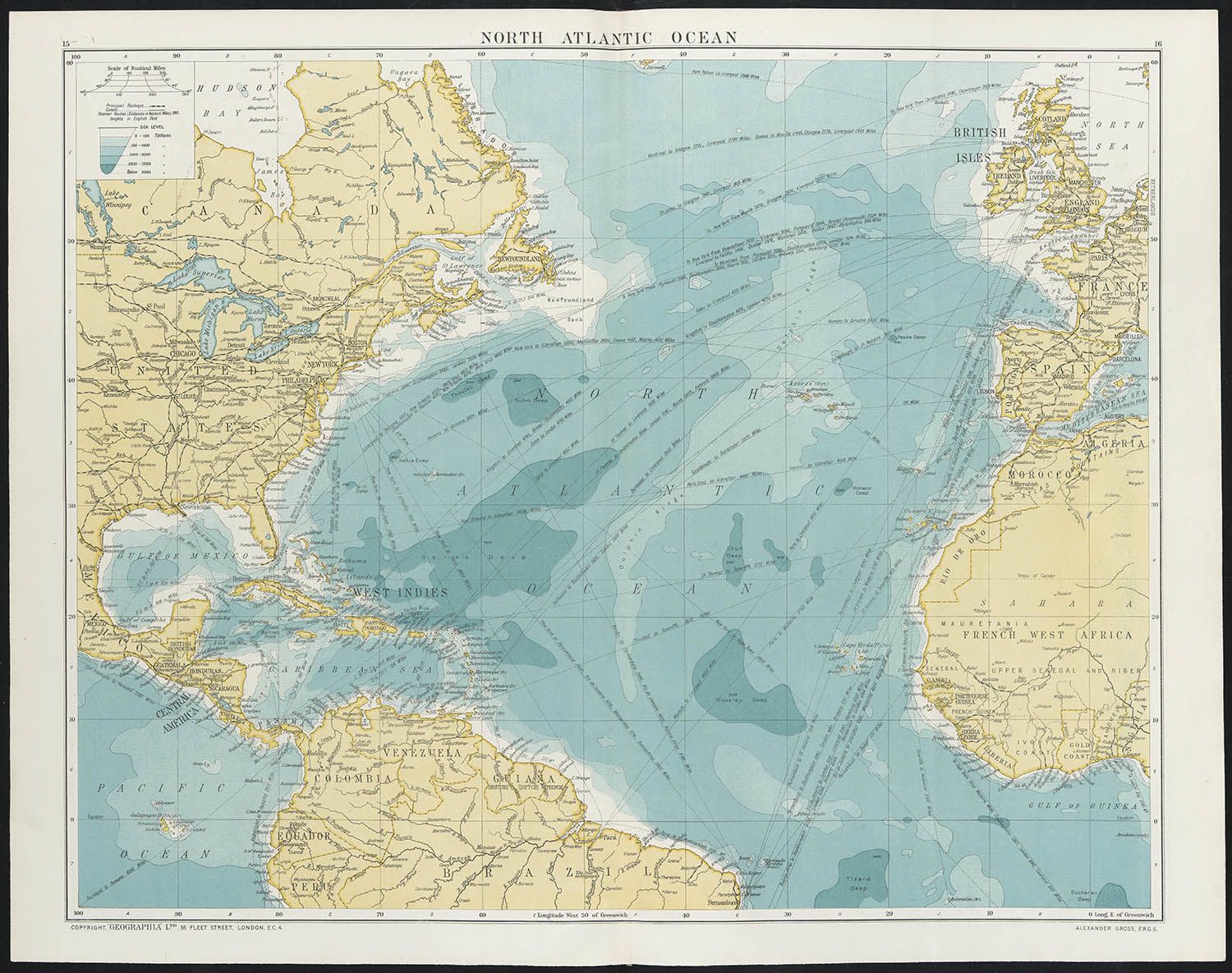
During the flight, which lasted more than 16 hours at an average speed of almost 120 mph, the pair overcame equipment failure, fog and ice, eventually crash-landing unhurt in a bog they had mistaken for a field. Alcock and Brown were feted as heroes and knighted by King George V the following week.
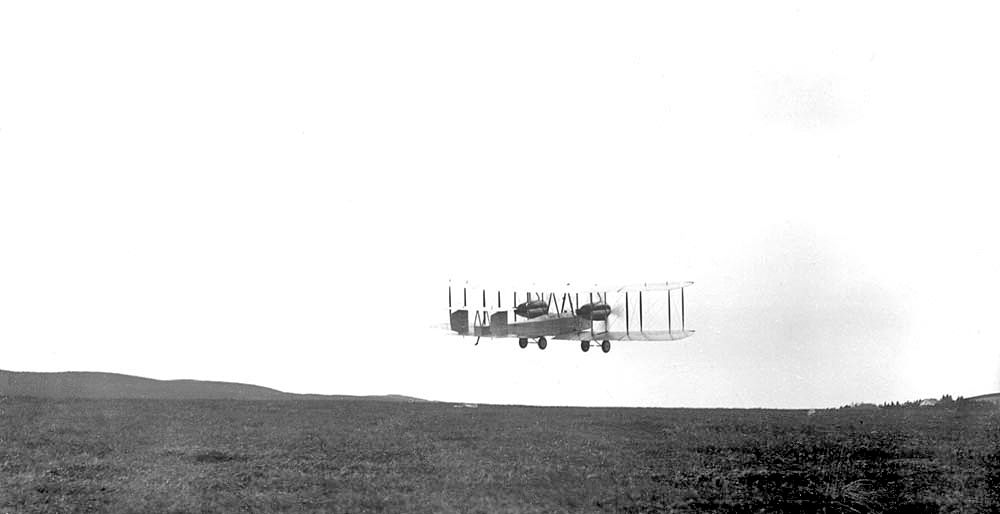
Cambridge University Library is home to the archive of Vickers Ltd and associated companies, which was donated to the University Library in 1985.
The archive is a treasure-trove for aviation historians and enthusiasts, and can be consulted by anyone holding a reader’s card.
Until June 22, key photographs and documents from the archive - which chronicle Alcock and Brown's extraordinary achievement - will be on free display in the Entrance Hall of the University Library on West Road, Cambridge.
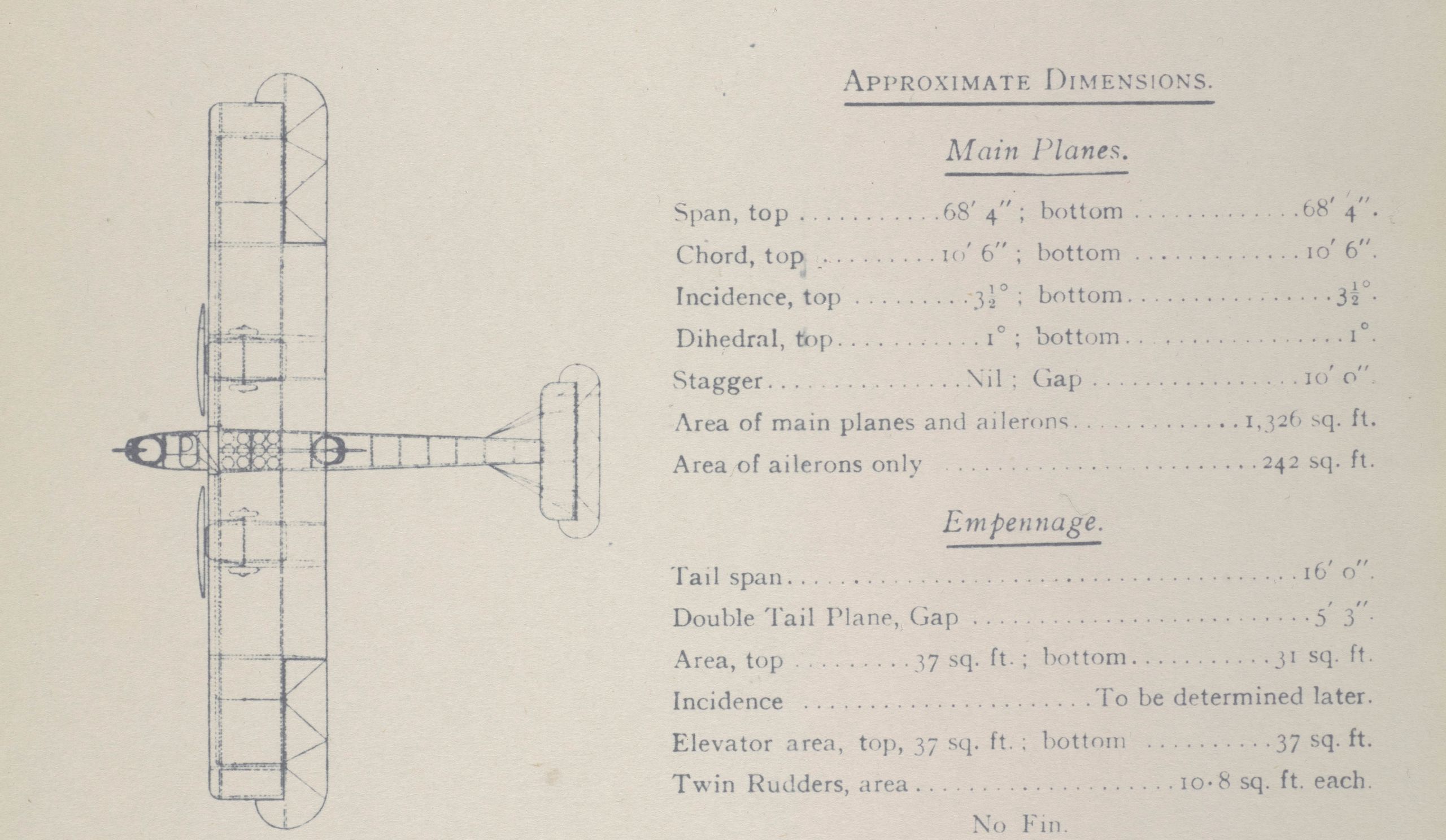
John Alcock, a decorated First World War pilot, had formed a determination to attempt a transatlantic flight while being held as a prisoner in Turkey in the final year of the War.
On his release he approached Vickers, whose Vimy bomber was a suitable machine for the ocean crossing.
He was already established at the Vickers works in Weybridge, Surrey, when his agreement with the firm was confirmed by an exchange of letters now held in the archives at Cambridge University Library.
The attempt at the Atlantic crossing is not specifically mentioned, but it is perhaps a telling detail that as part of the deal, Vickers insured Alcock’s life for £500.
An electrical engineer by training, and an Observer in the Royal Flying Corps during the War, Arthur Whitten Brown gained his place on the transatlantic flight after a chance meeting with Alcock at Vickers’s Weybridge works.
His engagement as navigator was settled by an exchange of correspondence; one of the letters on display at the Library shows Brown’s attention to the details of the contract, covering matters regarding the sea passage to America, the purchase of kit, and the payments to be made in the case of various eventualities.
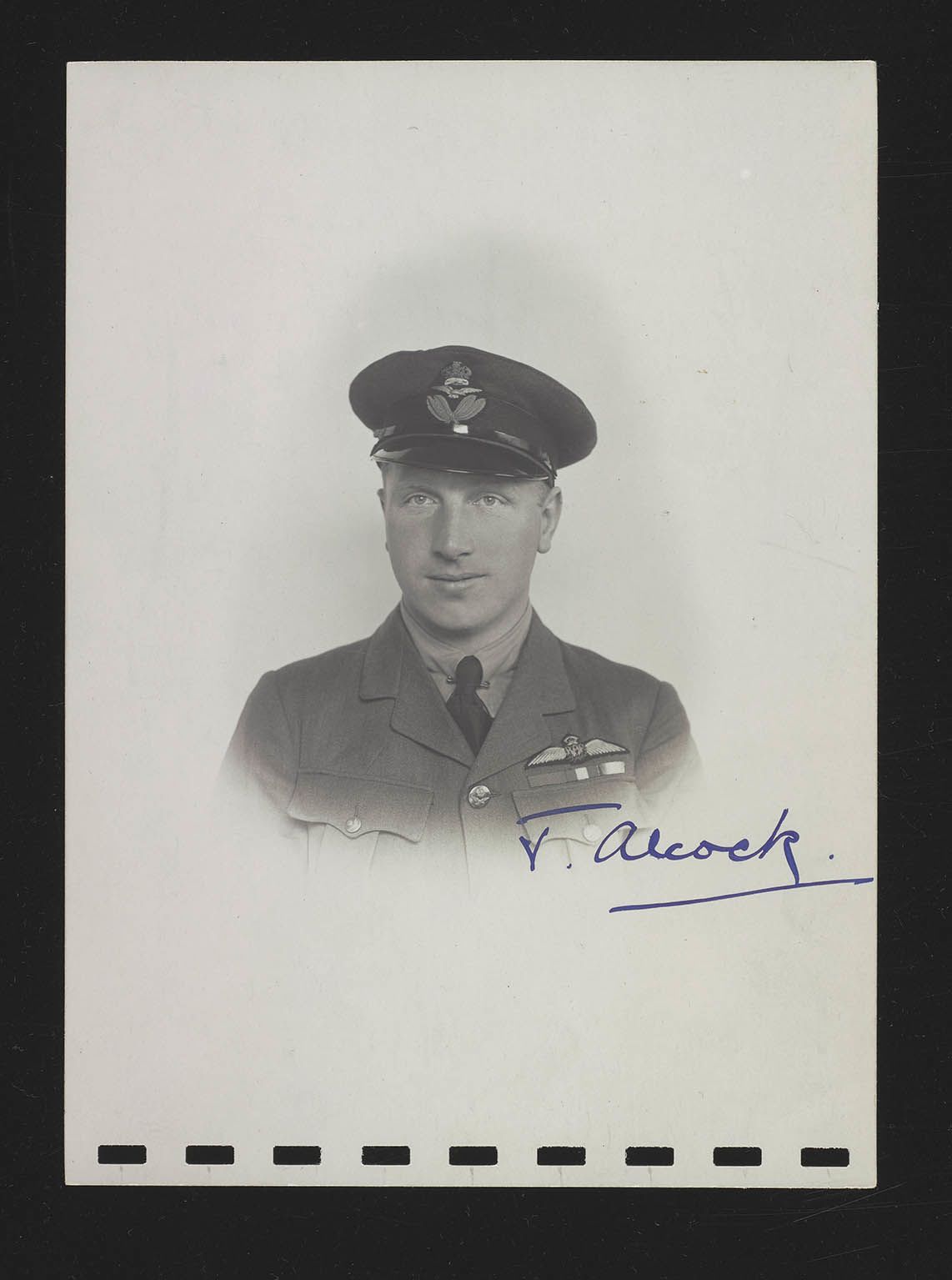
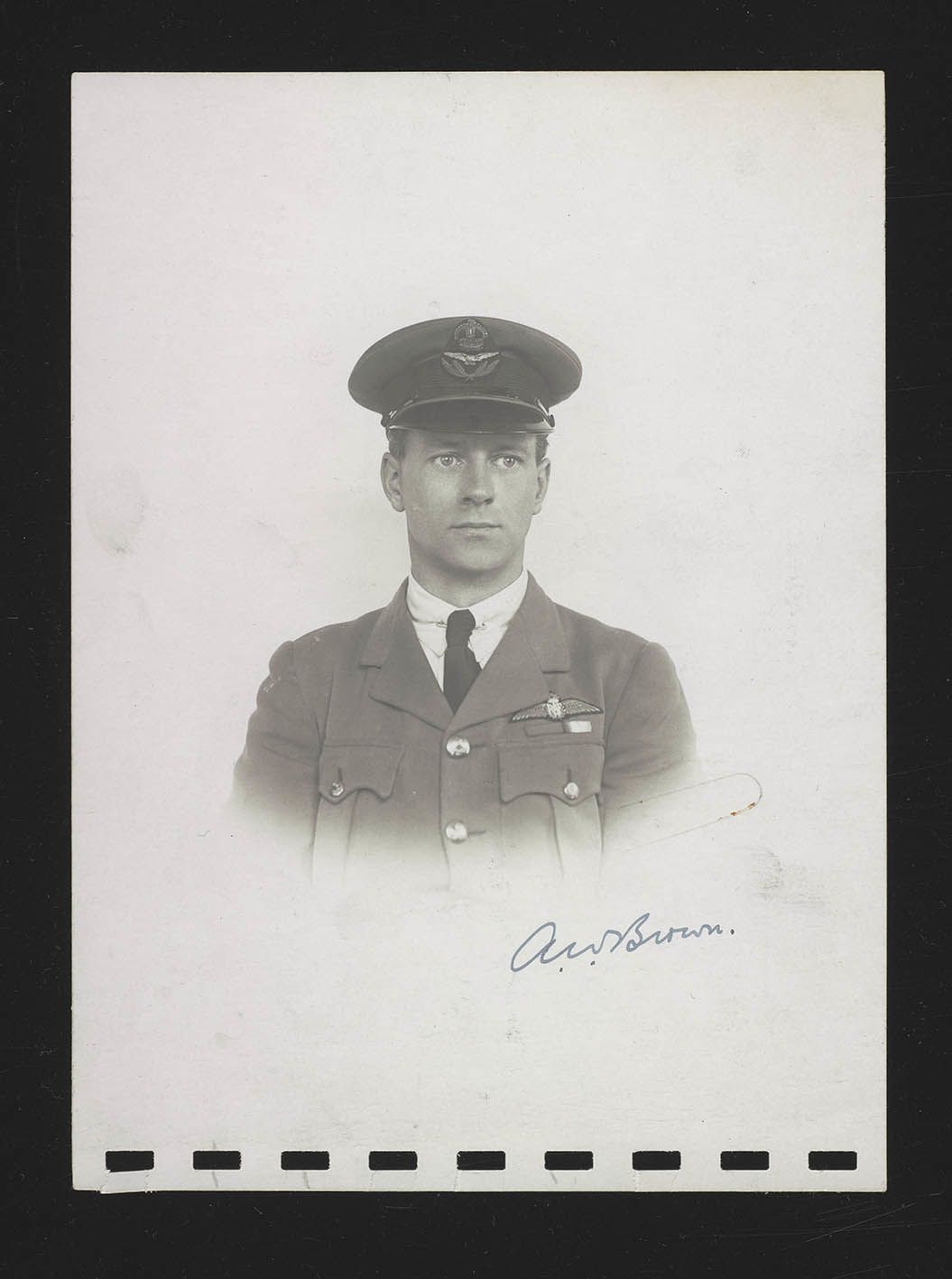
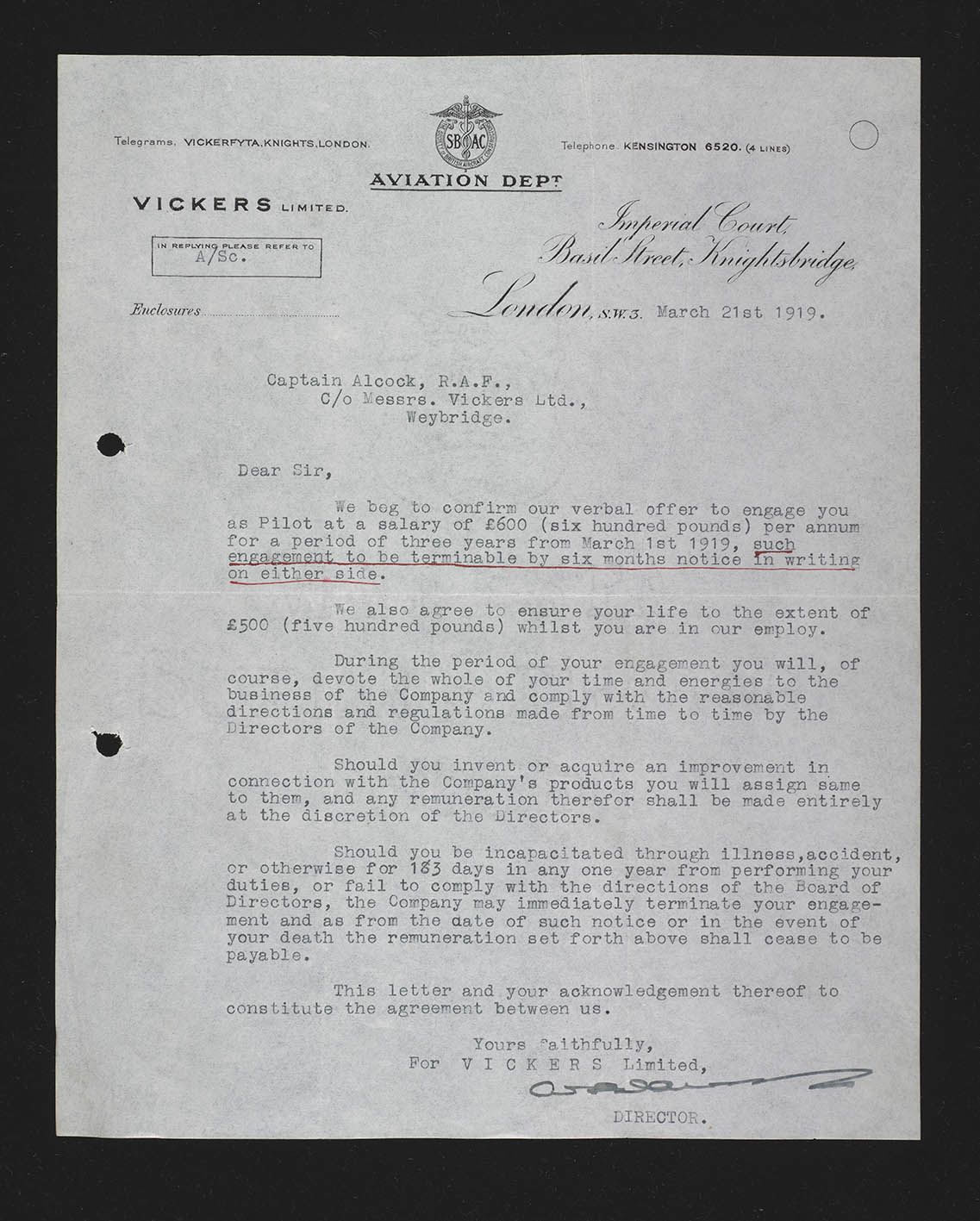
Correspondence between Vickers Ltd and John Alcock, March 21, 1919.
Correspondence between Vickers Ltd and John Alcock, March 21, 1919.
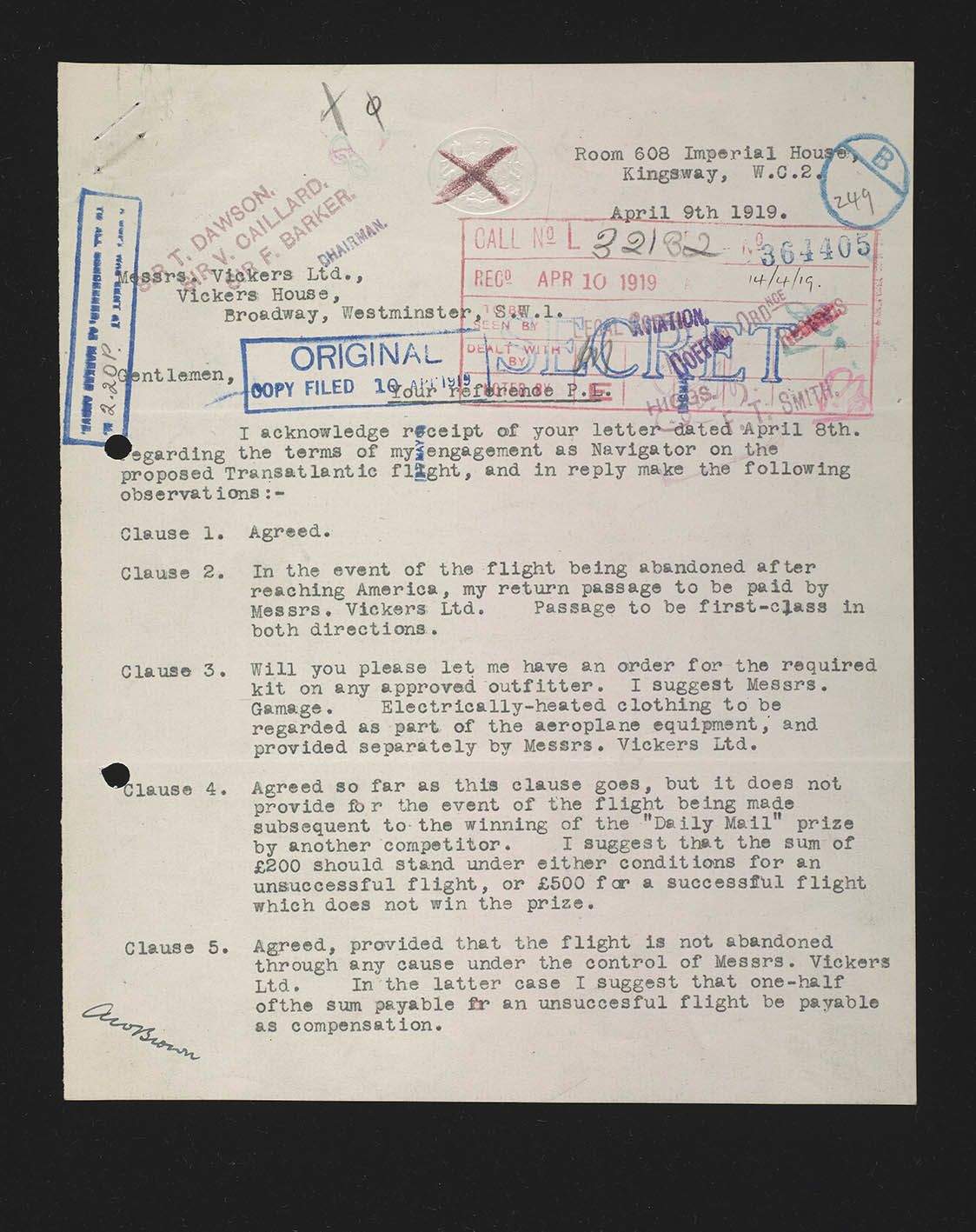
Letter from Brown to Vickers Ltd on April 9, 1919.
Letter from Brown to Vickers Ltd on April 9, 1919.
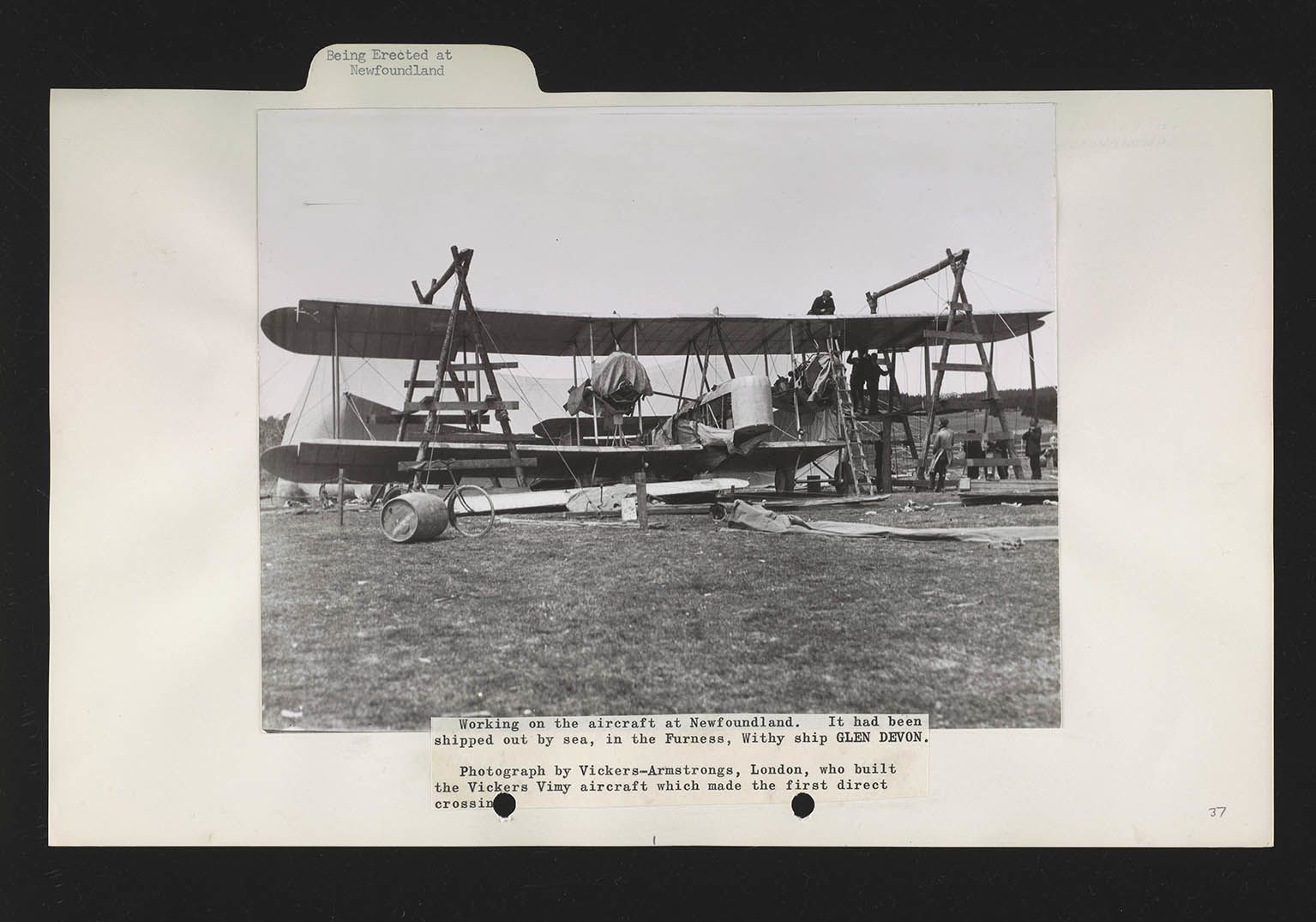
The Vimy was reassembled on the outskirts of St John’s. A trial flight was made on 9 June, and Alcock dispatched a report to Vickers HQ the following day. Although the trial was largely successful, there was a problem with the wireless transmitter which proved not to be satisfactorily resolved: it failed again shortly into the transatlantic flight.
The Vimy being reassembled on the outskirts of St John’s, Newfoundland.
The crossing
The first non-stop transatlantic crossing was not an easy flight. The overloaded aircraft had difficulty taking off the rough Newfoundland airstrip and only barely missed the tops of the trees.
At 17.20pm, the wind-driven electrical generator failed, depriving them of radio contact, their intercom and heating. An exhaust pipe burst shortly afterwards, causing a frightening noise which made conversation impossible without the failed intercom.
They also had to fly through thick fog. This was serious because it prevented Brown from being able to navigate using his sextant. Alcock twice lost control of the aircraft and nearly hit the sea after a spiral dive. He also had to deal with a broken trim control that made the plane become very nose-heavy as fuel was consumed.
At 12.15 am, Brown got a glimpse of the stars and could use his sextant, and found that they were on course. Their electric heating suits had failed, making them very cold in the open cockpit.
Then at 3am they flew into a large snowstorm. They were drenched by rain, their instruments iced up, and the plane was in danger of icing and becoming unflyable.
The carburettors also iced up; it has been said that Brown had to climb out onto the wings to clear the engines, although he made no mention of that.
They made landfall in County Galway, crash-landing at 8.40 am on June 15, 1919, not far from their intended landing place, after less than sixteen hours' flying time.
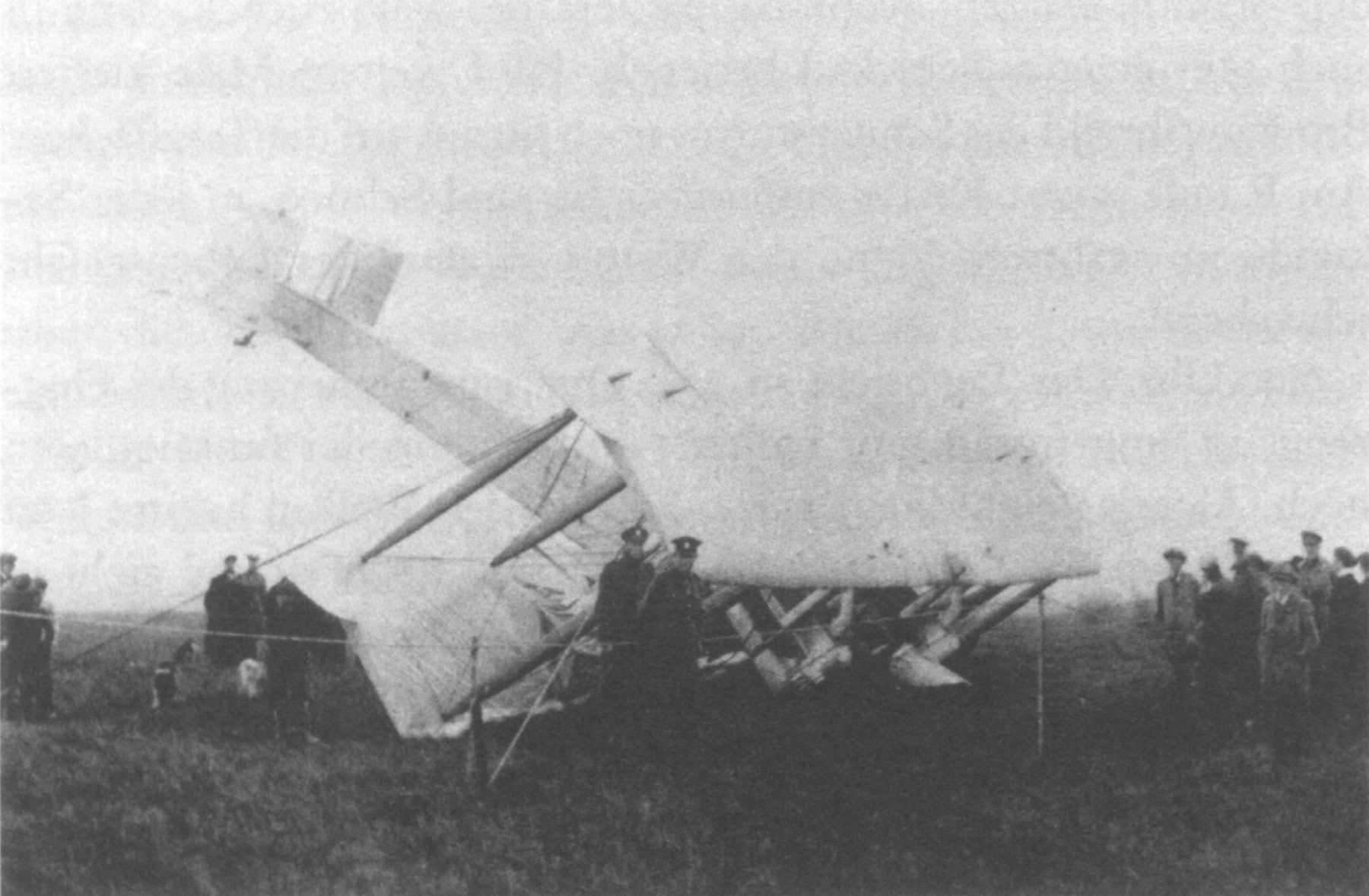
The Vickers Vimy pictured after its crash landing following the first non-stop transatlantic flight.
The Vickers Vimy pictured after its crash landing following the first non-stop transatlantic flight.
Sir John Alcock did not live long to enjoy his fame.
Employed by Vickers as a staff pilot to test and deliver aircraft, on 18 December, 1919, he set off to ferry a Viking amphibian to a display in Paris: he had intended to land it on the Seine. Instead he crashed in fog in northern France, and died of a head injury a few hours later.
In this, one of the last letters he wrote, he invited an engineer to accompany him on the flight. Pressure of work forced Mr Chorlton to decline.
Brown lived until 1948, working for Vickers and Metropolitan-Vickers and rejoining the RAF during the Second World War to train navigators and engineers. The transatlantic Vimy aircraft – repaired after its crash-landing – was donated by Vickers to the Science Museum in London, where in later life Brown used to visit it on the anniversary of the flight.
In the years immediately after the flight, airships seemed to hold more promise than heavier-than-air craft for long-distance journeys by air, despite their slower speed: only the following month, in July 1919, the R34 airship made the round-trip to America and back.
It wasn’t until 1927 that the next transatlantic flight was made with an aeroplane, and regular, scheduled flights came later still.
Alcock and Brown’s achievement stands as a pioneering effort and a singular feat of airmanship at a time when air travel of any kind was still at a relatively primitive state of development.
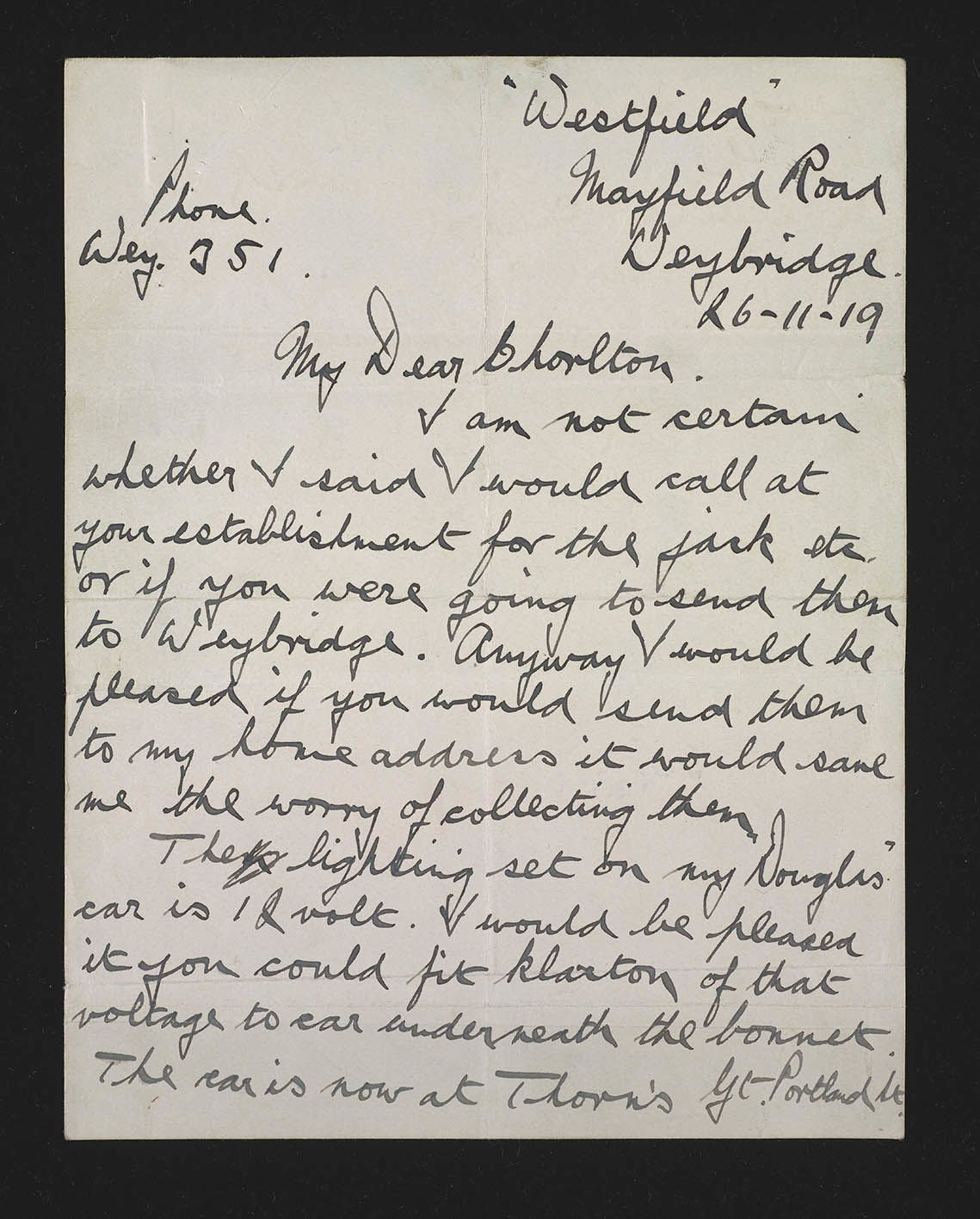
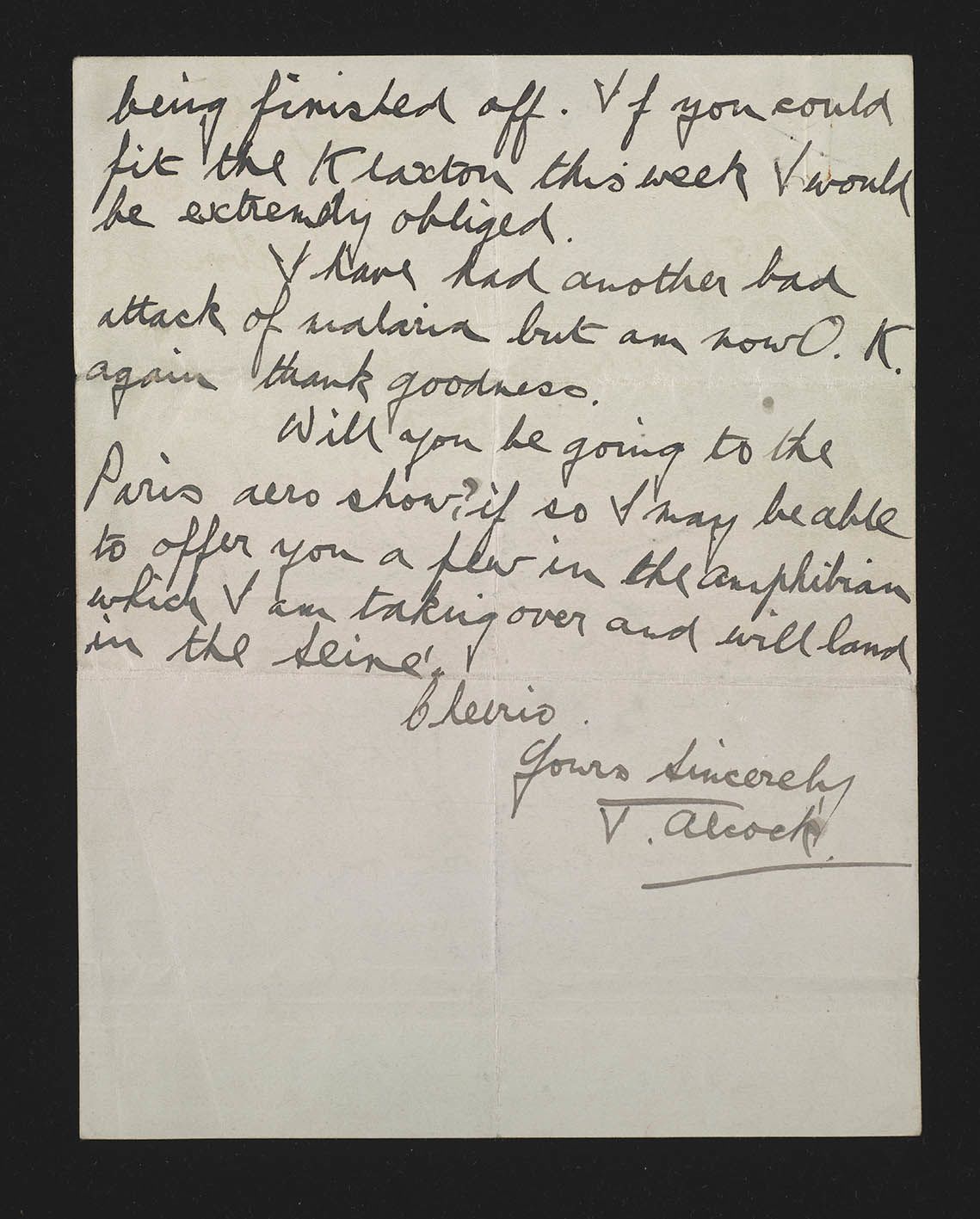
"The transatlantic flight documents on display in the University Library are drawn from a much larger collection of papers, photographic negatives and film formerly stored in the head office of Vickers Plc on Millbank.
"The Vickers Archive charts the rise and development of what was once one of the largest armaments companies in the world. The bulk of the collection covers the period 1870–1970, and the papers incorporate records of Vickers' former rivals Armstrong Whitworth of Newcastle, taken over in 1928.
"It is a magnificent resource for the history of military and civil aviation, and in addition to the Vimy is particularly strong for famous aircraft types such as the Spitfire, Wellington and Viscount."
John Wells, Senior Archivist, Cambridge University Library
